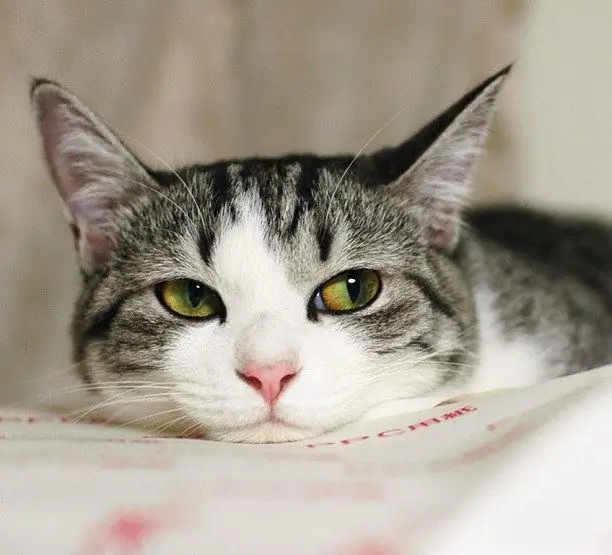- Author Delia Mathews [email protected].
- Public 2023-12-16 00:05.
- Last modified 2025-01-22 15:45.
Many human diseases are also common in animals, and constipation is no exception. Constipation in cats is dangerous because if it is not diagnosed on time, it can cause irreparable harm to the health of your pet. The best way to relieve an animal is a laxative.

Instructions
Step 1
Most often, the cause of constipation in cats is matted hairballs in the stomach or intestines, formed during the licking process. Difficulties in defecation can be triggered by malnutrition, tumors in the intestine or its chronic diseases, and even massive helminthic invasions. This problem is especially relevant for those cats that have thick long hair, lead a sedentary lifestyle and those of them who are already many years old.
Step 2
The inability to empty the intestines on time leads to the accumulation and hardening of feces in it, not only causing pain and inconvenience to the animal, but also becoming the cause of intoxication of the body. The owner should be attentive to any changes in the cat's behavior. A symptom of constipation can be obvious discomfort that the animal experiences, obvious painful sensations when pressing on the abdomen. In advanced cases, the cat may begin to vomit and nausea, it may completely refuse food, swellings may appear around or on both sides of the anus, and scraps of hair and blades of grass may stick out from the anus. In all these cases, you should show the animal to the veterinarian to prescribe a laxative, but if this is not possible, immediately exclude laxatives that are intended for humans and try proven folk remedies.
Step 3
A good and safe way to relieve an animal's flour is petroleum jelly, which is not absorbed into the walls of the stomach and intestines, but only envelopes them, providing softening and permeability of feces. A few drops of this oil can simply be added to cat food. Condensed milk diluted in raw unboiled water also works well for cats. If the cat refuses to drink it on its own, simply fill a plastic syringe with liquid and inject it by sliding the plastic tip of the syringe between the teeth. You can inject liquid into the root of the tongue by opening and holding the animal's mouth with your fingers.
Step 4
The easiest way is to insert a special suppository into the cat's anus, for example, "Bisacodyl", but you probably cannot do an enema yourself, for this it is better to contact your veterinarian. To improve bowel movements, you can give your cat a special food, for example, Hill's Prescription Diet Feline, which contains many indigestible plant fibers that facilitate this process. To prevent the accumulation of rolled hairballs in the intestines, Kittymal is given orally to cats, which can be purchased at a veterinary pharmacy.






